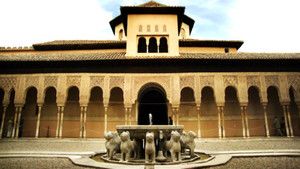- Middle East - English
Americas
Asia & Oceania
Middle East & Africa
Europe
SHOWS
SHOWS BY SUBJECT
DON'T MISS
 Building Impossible with Daniel AshvilleLa Mega Stadium
wednesday 24 april 2024 at 7:00pm
Building Impossible with Daniel AshvilleLa Mega Stadium
wednesday 24 april 2024 at 7:00pm
 Extraordinary Birder With Christian CooperExtraordinary Birder with Christian Cooper: New York City
wednesday 24 april 2024 at 8:00pm
Extraordinary Birder With Christian CooperExtraordinary Birder with Christian Cooper: New York City
wednesday 24 april 2024 at 8:00pm
 Life Below Zero: First AlaskansStrong Foundation
wednesday 24 april 2024 at 9:00pm
Life Below Zero: First AlaskansStrong Foundation
wednesday 24 april 2024 at 9:00pm
 PhotographerPaul Nicklen & Cristina Mittermeier: Win or Die
wednesday 24 april 2024 at 10:00pm
PhotographerPaul Nicklen & Cristina Mittermeier: Win or Die
wednesday 24 april 2024 at 10:00pm
 PhotographerMuhammed Muheisen: Finding the Light
thursday 25 april 2024 at 7:00pm
PhotographerMuhammed Muheisen: Finding the Light
thursday 25 april 2024 at 7:00pm
TOP SHOWS
VIDEOS
Don't Miss
Most Viewed
Secrets of the Octopus
Show: Secrets of the OctopusFight Science
Show: Fight ScienceGenius - Scientist
Show: GeniusThe Hot Zone
Show: The Hot ZoneSavage Kingdom
Show: Savage KingdomNaked Science
Show: Naked ScienceEurope from Above
Show: Europe from AboveKatie’s New Face
Show: Katie’s New FaceHard Time: Locked Up
Show: Hard Time: Locked Up
PHOTOS
Photo of the day
![A lioness takes down a buffalo. This... [Photo of the day - 24 APRIL 2024]](https://assets-natgeotv.fnghub.com/POD/15180.ThumbL.jpg)
![At Quaife Engineering, Dave King and... [Photo of the day - 23 APRIL 2024]](https://assets-natgeotv.fnghub.com/POD/15178.ThumbL.jpg)
![Nono, the Pol family's goat, walks... [Photo of the day - 22 APRIL 2024]](https://assets-natgeotv.fnghub.com/POD/15176.ThumbL.jpg)
Most Viewed
SharkFest
Show: SharkFestAir Crash Investigation
Show: Air Crash InvestigationDrain The Oceans
Show: Drain The OceansMaine
Show: Gordon Ramsay: UnchartedDestination Wild
Show: Destination WildFood Factory - Season 3
Show: Food FactoryMagic of Disney's Animal Kingdom
Show: Magic of Disney's Animal Kingdom
TV LISTINGS

DESCRIPTION
Certain landmarks have captured the imagination and awe of modern-day architects and engineers around the world as they work to solve the mystery of how their ancient forebears were able to construct such beautiful, timeless and revolutionary structures with none of the machines and materials available to modern engineers.
From the dreams that inspired them, to the blood and sweat that built them, discover the full story behind six magnificent structures that forever changed the landscape of architecture: Petra, Alhambra, St.Paul’s Cathedral, Hagia Sophia, Machu Picchu and Angkor Wat.
EPISODE GUIDE
- Ancient Megastructures: Machu PicchuPerched on a remote mountain ridge in the Peruvian Andes, at an elevation of over 2,500 metres, are the remains of an ancient city. Built on the ambitions of a 15th Century emperor, it is the spectacular legacy of the greatest empire of the Americas – the Inca Empire. To demonstrate his divinity, Emperor-God of the Incas, Pachacuti ordered the construction of a sacred city in the sky. A city that would last for all eternity and capture the rays of the sun as well as the mystical energy of its natural surroundings. Racing against time, Pachacuti’s engineers face one problem after another – how to shore up the land and buildings against landslides, earthquakes, and torrential rains; how to safely channel downpours and provide water to 1,000 people living on a mountain ridge 450 metres above the nearest river; how to move – without winches, wheels, oxen, or horses – the vast building blocks of granite, often weighing several tons; and how to build, without cement or mortar, walls that would resist everything nature and time could throw at them, walls whose beauty and stonework continue to amaze engineers and architects. Discovered less than 100 years ago, Machu Picchu remains just as Pachacuti intended, one of the most mysterious and awe-inspiring ancient megastructures in the world.
- Ancient Megastructures: The AlhambraThe Alhambra is the greatest example of Islamic military architecture in Europe. But just how did they construct such an impregnable fortress?
- Ancient Megastructures: Angkor WatHidden deep in the jungles of Cambodia, the mighty temple of Angkor Wat represents the Hindu universe and stands as one of the largest religious monuments in the world. In the 12th Century the King of the Khmer Empire, Suryavarman, hoped to create “heaven on earth” for his mausoleum and personal heaven in the afterlife. The temple plans require the construction of an enormous temple mountain and moat shaped with indigenous laterite and encased by thousands of sandstone blocks. But with no quarry nearby, thousands of workers set out for the distant Kulen Hills to cut, shape and float each block down a series of canals back to the temple site. Experts estimate that workers cut and transported up to 400 blocks per day. Amazingly, each of the perfectly placed blocks that make up this “Temple City” remains in place due to stone-on-stone friction – no mortar or nails were used in its original construction. Larger than any European cathedral, Angkor Wat takes up as much space as over 200 football fields in a monsoon-swept floodplain, but took just 35 years to construct using only man-power and iron-age tools.
- Ancient Megastructures: Istanbul's Hagia Sophiaaspired to extend Byzantine rule over most of the Mediterranean and demonstrate his power by building dozens of churches throughout the empire. Hagia Sophia, which means “Holy Wisdom,” was built in what is now Istanbul, Turkey, and had a record-breaking dome stretching over 31 metres. To realise his vision, Justinian ordered two men skilled in the ‘science of mechanics’, Anthemius of Tralles and Isidore the Elder, to design a revolutionary structure. To build the most glorious church in the Byzantine Empire, Anthemius and Isidore must find the right materials and invent new construction methods. Battling against the clock under Justinian’s constant scrutiny, a 10,000 strong workforce completed the structure in just six years. But 20 years later, Justinian’s dream came crashing to earth. In 558 AD, a powerful earthquake brought down the enormous dome. It fell to Isidore the Younger, nephew of Isidore the Elder, to repair the damage. He raised the dome and gave it extra support. The result is the largest church built in the early Christian era. Despite serious earthquakes, rushed construction and war, the Hagia Sophia stood for over 1,000 years as the largest cathedral in the world.
- Ancient Megastructures: Machu PicchuPerched on a remote mountain ridge in the Peruvian Andes, at an elevation of over 2,500 metres, are the remains of an ancient city. Built on the ambitions of a 15th Century emperor, it is the spectacular legacy of the greatest empire of the Americas – the Inca Empire. To demonstrate his divinity, Emperor-God of the Incas, Pachacuti ordered the construction of a sacred city in the sky. A city that would last for all eternity and capture the rays of the sun as well as the mystical energy of its natural surroundings. Racing against time, Pachacuti’s engineers face one problem after another – how to shore up the land and buildings against landslides, earthquakes, and torrential rains; how to safely channel downpours and provide water to 1,000 people living on a mountain ridge 450 metres above the nearest river; how to move – without winches, wheels, oxen, or horses – the vast building blocks of granite, often weighing several tons; and how to build, without cement or mortar, walls that would resist everything nature and time could throw at them, walls whose beauty and stonework continue to amaze engineers and architects. Discovered less than 100 years ago, Machu Picchu remains just as Pachacuti intended, one of the most mysterious and awe-inspiring ancient megastructures in the world.
- Ancient Megastructures: St. Paul's CathedralWhen the Great Fire of 1666 destroyed St. Paul’s Cathedral in London, a Royal Commission turn to 35-year old astronomer, Christopher Wren, to rebuild it. Wren’s first design in the classical style was rejected outright by the traditionally-minded Protestant churchmen who wanted a Gothic cathedral. So Wren presented the commission with a cathedral that possessed both Classic and Gothic elements and won the commission’s approval. But with a mathematician’s belief in the inherent superiority of Classical over Gothic architecture, Wren sets out through a combination defiance and cunning to realise his dream of building a classic cathedral. Doing so meant he must overcome crisis after crisis during the 35 years it took to build St. Paul’s. As he finally started work on his beloved dome, he discovered that the whole cathedral was sinking. The building’s foundations were not strong enough to support the structure’s walls, let alone a 65,000 tonne dome. With the help of ground-breaking experiments in physics, Wren designed a unique, triple-layered dome that allowed him to crown his cathedral but prevent the building from sinking further into its foundations. St. Paul’s Cathedral, now 300 years old, is an icon of London, and a memorial to the man many consider Britain’s greatest architect.
- Ancient Megastructures: PetraStanding at the crossroads of the ancient Near East in present-day Jordan, only traces remain of what was once a great capital city the old manuscripts call “Petra’” – the Greek word for stone. Petra’s location at the centre of numerous trade routes offered great wealth for any settlement that could survive the bone-dry sands and suffocating heat. And against all odds, wealthy traders known as the Nabataeans created a thriving desert community in Petra around the First Century BC. In an area where less than 15 centimetres of rain falls a year, the Nabataeans succeeded in harnessing the rain that fell each year and managed to support a population of over 50,000 using an advanced system of terracotta pipes and hydraulics. The most magnificent of their buildings is known as Al Khazneh. Hewn from a single piece of rock, constructing the iconic structure required ingenious, top-down engineering. But just why the Nabataeans built the Khazneh has remained a mystery for centuries. Now, groundbreaking discoveries reveal crucial clues to its true purpose. The breathtaking remains of Petra stand as a testament to human ingenuity in even the most inhospitable environments.
- Ancient Megastructures: The Great PyramidThe Great Pyramid of Giza is 4,500 years old. It's the only ancient wonder of the world still standing. To cut and move the 2 million stones needed to build it would involve the whole Egyptian state.
- Ancient Megastructures: Chatres Cathedral
- Ancient Megastructures: The ColosseumFollow the dramatic story behind the building of the Colosseum in Ancient Rome. The Romans used innovative technology that we still use today, but the money to pay for the project enslaved the nation.
- Ancient Megastructures: ChartresWe bring you behind the building of Chartres Cathedral which lays a dark story of violence, political double-dealing and destruction.
- Ancient Megastructures: Pyramid
- Ancient Megastructures: Machu PichuPerched on a remote mountain ridge in the Peruvian Andes, at an elevation of over 2,500 metres, are the remains of an ancient city. Built on the ambitions of a 15th Century emperor, it is the spectacular legacy of the greatest empire of the Americas – the Inca Empire. To demonstrate his divinity, Emperor-God of the Incas, Pachacuti ordered the construction of a sacred city in the sky. A city that would last for all eternity and capture the rays of the sun as well as the mystical energy of its natural surroundings. Racing against time, Pachacuti’s engineers face one problem after another – how to shore up the land and buildings against landslides, earthquakes, and torrential rains; how to safely channel downpours and provide water to 1,000 people living on a mountain ridge 450 metres above the nearest river; how to move – without winches, wheels, oxen, or horses – the vast building blocks of granite, often weighing several tons; and how to build, without cement or mortar, walls that would resist everything nature and time could throw at them, walls whose beauty and stonework continue to amaze engineers and architects. Discovered less than 100 years ago, Machu Picchu remains just as Pachacuti intended, one of the most mysterious and awe-inspiring ancient megastructures in the world.
- Ancient Megastructures: ColosseumThe story behind the building of the Colosseum in Ancient Rome: The Romans used groundbreaking technology, but the money to pay for this grand project enslaved people & brought a temple crashing down.
- Ancient Megastructures: Chartres CathedralThe dramatic story behind the building of Chartres Cathedral; how it arose like a beacon from the ashes of the older church, the scale of its ambition posing seemingly impossible engineering challenges. The solutions pushed the latest construction techniques to the limit. The result would change the buildings of the world - forever. But behind this triumph of engineering lies a dark story of violence, political double-dealing and destruction.
- Ancient Megastructures: Allhambra
- Ancient Megastructures: Chatres
ADVERTISEMENT
PHOTOS

The Allambra
The Allambra
- All Galleries
VIDEOS

Chartres Cathedral
Chartres Cathedral
(00:30)- All Videos
More On Megastructures
More On Engineering
More On Science



















